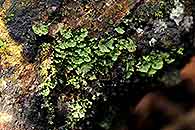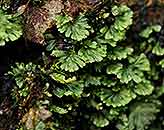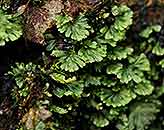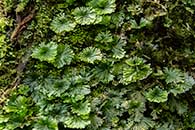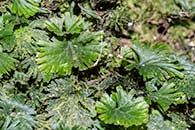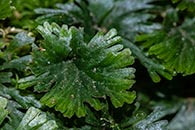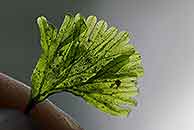Crepidomanes mannii (Hook) J.P.Roux
Synonyms |
Trichomanes mannii Hook. |
|---|---|
Common name |
|
Description |
Rhizome long-creeping, threadlike, branched, with dense light to dark brown hairs to 0.8 mm. Fronds spaced. Stipe 1–2.5 cm long, sometimes proliferous, not winged, glabrous except at the very base. Lamina dark green, suborbicular to ovoid or rhomboid in outline, irregular, up to 5(–9) x 3 cm, palmately or flabellately and dichotomously dissected, the segments sometimes themselves pinnatifid, occasionally 2-pinnatifid, base wedge-shaped. Ultimate segments ± 0.5 mm wide, apex rounded or notched; with longitudinal folds on drying. Sori up to 8 in number, marginal, often axillary in the sinuses between the lobes in the upper part of the lamina; indusium cone- to bell-shaped, up to 1.8 ×0.8 mm, minutely winged, mouth widened to 1 mm, wavy, scarcely 2-lipped; receptacle often exserted. |
Notes | |
Derivation | mannii: in honor of Gustav Mann (1836-1916), German botanist, Kew gardener, plant collector, botanical explorer, Indian Forest Service 1863-1891, a member of William Balfour Baikie's Niger expedition 1859-1862, and British colonial repres |
Habitat | On wet rocks or lower parts of tree trunks in moist shady forests. |
Distribution worldwide | Africa, Madagascar, Comoro and Mascarene Islands. |
Distribution in Africa |
Angola, Burundi, Cameroon, Central African Republic, Congo, Dem. Republic of Congo, Equatorial Guinea (incl. Bioko), Gabon, Guinea, Ivory Coast, Kenya, Liberia, Malawi, Nigeria, Rwanda, Senegal, Sierra Leone, Sudan and South Sudan, Tanzania , Togo, Uganda, Zambia. |
Growth form |
Epiphytic, lithophytic. |
Literature |
|
